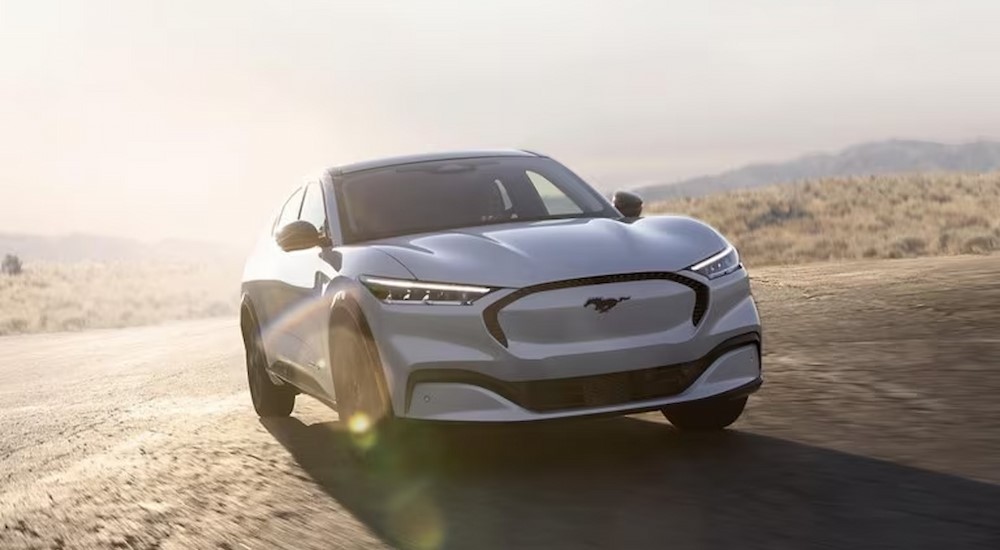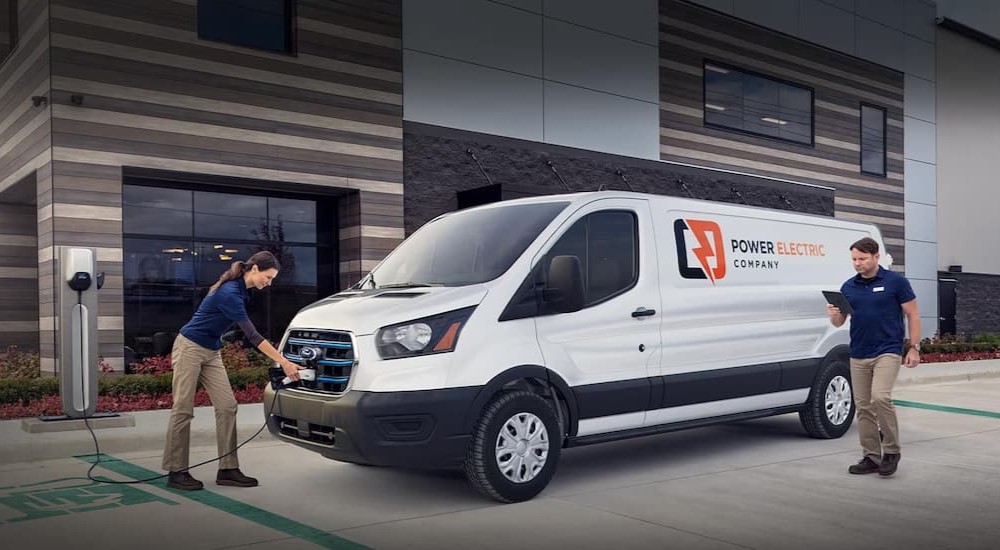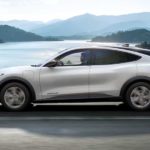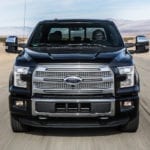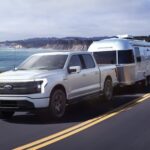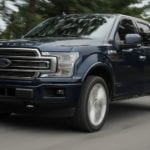In recent years, Ford has made a concerted move to enter and dominate the electric vehicle (EV) marketplace. This has included developing EV and hybrids, adding hybrid versions to many of its most popular models, developing a network of Blue Oval public supercharging stations, and building plants in Tennessee and Kentucky to create EV and hybrid batteries. In fact, the projected investment in the Blue Oval City project could reach over $11.4 billion alone, which is why you’ll probably see your local Ford dealer become a Ford electric car dealership in the very near future. Behind all this is a realization that America will be moving to EVs. Ford needs to be positioned to capture this market as the trends from conventional gas engines to hybrids and EVs increase.
Driving much of this change is a series of Ford hybrid and EV models rolling out over the past few years, with some new ones currently being added to the drawing board. In addition, in Europe, where the push for electrification is stronger than in the States, Ford has already been introducing new EV models that may make it to these shores in the not-too-distant future.
Ford Hybrids
The earliest electrification has been seen in hybrid vehicles. These models that pair a conventional gas engine with an electric motor powered by a high-powered battery have been the precursors of the EV movement. While Ford was not the originator of the hybrid model, it quickly embraced this technology, becoming one of the first brands to offer a hybrid engine option on many of its most popular models. This includes the Escape crossover, the Explorer three-row SUV, and the F-150 full-size, half-ton truck. Each offers drivers the option of a hybrid engine, with the gas engine keeping the battery charged through a generator at low speeds. In addition, drivers can opt for a plug-in hybrid version of the Escape, which delivers exceptional fuel economy and the convenience of charging the battery by plugging into an electrical source.
In addition, when Ford chose to introduce the Maverick compact truck, it was decided to offer its hybrid engine as a standard feature. This allows drivers to capture the fuel economy benefits of a hybrid without paying a premium for this powertrain. In fact, if you want a conventional gas engine on your Maverick truck, you will actually have to pay extra for this option. This is a bit of an inversion of the usual situation where a model is offered with a hybrid engine option.
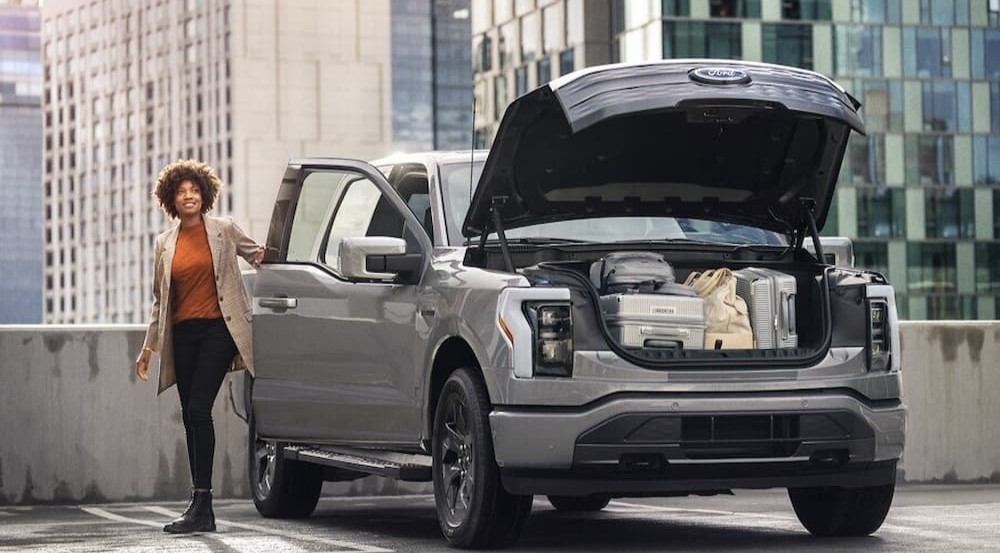
Ford Mustang Mach-E
For its first fully electric model, Ford chose a fascinating name and design. Named for the famous sports car that has been a flagship for the brand since the mid-60s, the Ford Mustang Mach-E is a BEV compact SUV. Yes, a battery electric vehicle with a compact SUV design is the first vehicle to carry the Mustang name besides the popular pony car that’s been at the forefront of Ford for over 50 years!
Nevertheless, the Mustang Mach-E has earned its stripes by providing a sporty design with impressive acceleration. The GT model can go from 0 to 60 mph in an eye-blinking 3.5 seconds. It also gives you excellent range in a vehicle that uses absolutely no gasoline. In this way, the Mustang Mach-E marries the performance promise of its name with the future benefits of an EV. Since its introduction in 2021, this model has been a leader among BEV compact SUVs, leveraging Ford’s Mustang name and logo in a way comparable models from Ford’s competitors have been incapable of replicating.
Ford F-150 Lightning
Where most automakers focused on compact and subcompact sedans and SUVs to serve as the platforms for their EV and hybrid models, Ford decided to go in a different direction with its second BEV passenger model offering. The single most popular truck in America is also currently the best-selling passenger vehicle. The Ford F-150 has held the top spot among pickup trucks in America for an astounding 46 years, dating back to 1966, with this truck holding the top spot for sales among all passenger vehicles for an equally impressive 41 years. When you take into account that the Ford F-Series trucks celebrated 75 years of production this year, it becomes hard not to marvel at this vehicle’s longevity. It really shouldn’t come as a surprise that Ford chose the F-150 to be its second EV.
The Ford F-150 Lightning delivers everything you’d want in a pickup truck. It is solid and reliable, and the 2024 model can tow up to 10,000 lbs and carry up to 2,235 lbs in its payload bed. These numbers compare favorably to F-150 models with conventional gas engines. However, the F-150 Lighting won’t cost you a single drop of gasoline. At the same time, it has incredible acceleration, making you think you’re in a sports car and not a full-size truck. Ford has equipped the F-150 Lightning with dual motors, effectively the electrical equivalent of four-wheel drive, which is always a desired feature on many pickup trucks. As an additional feature, the F-150 Lightning has Intelligent Backup Power—this will help power your home in a blackout if your truck is plugged in to charge.
Ford E-Transit Van
The E-Transit is not a passenger van but rather a commercial vehicle designed for getting the job done without costing you or your business a penny on gasoline. Ford offers the E-Transit in three different vehicle lengths, each with different roof heights, and allows you to customize the E-Transit to fit your business needs. Each choice of vehicle length delivers different cargo space amounts and configurations, as someone using it for cargo transport has different needs from a plumber, electrician, or carpenter who might want the E-Transit for their jobs.
Ford also offers an available Pro Power Onboard, which uses the powerful battery on the E-Transit to give you 2.4 kW of electrical power at your job site. You can power tools, operate a laptop, or recharge battery-powered equipment.
Explorer EV
The next possible Ford model to get the EV treatment may be the three-row Explorer SUV. This past March, Ford announced that it would begin producing an EV version of the Explorer at its plant in Germany, with the intent of rolling this out to countries in Europe. Martin Sander, the general manager of Ford Model E, Europe, points out, “Explorer is a trailblazer for a new breed of exciting Ford electric vehicles. Steeped in our American roots but built in Cologne for our customers in Europe, it is road trip-ready for the big adventures and fully loaded with everything our customers will need for their daily drives.”
The Explorer EV could be the first of many EVs to be offered by Ford for its European customers. Currently, Ford is selling such popular EV models as the Mustang Mach-E and E-Transit, also sold here in America. However, seven additional models could be joining Ford’s European EV lineup within the next twelve months. These include a subcompact EV version of the Puma that is not sold in America and the Tourneo Courier and Tourneo Custom multi-purpose vehicles, which appear to be European versions of the very popular Bronco and Bronco Sport. The remaining four models have not been named but are referred to by their styling, listed by Ford as Medium-size Crossover, Sport Crossover, Transit Courier, and Transit Custom. The last two looks to be smaller versions of the E-Transit, so they may be intended primarily for commercial purposes. While Ford has yet to make any announcements, it wouldn’t be surprising to see versions of these new EVs show up in America if they prove successful in Europe. These will likely have different names, much like how the Puma is the best-selling Ford model in Europe but is not sold in America. The comparable model to the Puma in America is the Ford EcoSport, which was discontinued following the 2022 model year.
Positioned for an Electrical Future to Avoid Future Shock
Ford has positioned itself for the future by embracing the EV revolution. It has begun slowly rolling out EV models, with three currently available to American drivers. The decision to begin building an EV version of the Explorer in Germany, combined with the decision to expand the EV lineup in Europe to nine different models, shows that Ford is looking to capture a significant part of the EV marketplace. It also reveals their intent to not be caught short as the market steadily moves toward EVs over other propulsion systems. It would not be shocking to see many of these models, offered first in Europe, begin showing in America in the next few years.
